Tamiya N1K1 Kyofu / 'Rex', 'Japan's Purpose-Built Floatplane Fighter'
I've built a lot of clean models this year, and what better excuse to make a beaten up bird than a Japanese subject? I ordered this while waiting for some supplies for other projects to arrive and have had fun beating up this big 1/48 fighter.
A Quick History
The Kawanishi N1K1 Kyofu, named 'Rex' by the allies, was a floatplane fighter that began it's life in 1940. In September 1940 the Imperial Japanese Navy issued a specification for a floatplane fighter design that would be able to support offensive operations in areas where airbases weren't or could not be constructed. Kawanishi worked on the design during 1941 and a prototype was built, first flying in May 1942. The design had some unique qualities, firstly it was built with a 4-bladed contra-rotating prop design which whilst performance was good when it worked reliability was a huge issue with many failures of the gearbox being encountered resulting in the design going with a 3-bladed propeller. The final design reflected this change, keeping the long spinner and simply locking the rear part that would be for the other set of blades.
Other than that the aircraft was very successful in tests, performance was very capable for a floatplane design though naturally the added weight and drag meant it was in another league to conventional aircraft. Compared to it's floatplane cousin, the A6M2-N, the Rex had nearly 40mph faster cruise speed and a 20mph faster max speed. All in all the 'Rex' seemed a promising design for a unique role that only Japan utilised.
The 'Rex' was ordered into production during 1943, but delivery went at a snails pace even by Japanese standards. A large part of this was due to the changing nature of the war, Japan was no longer on the offensive and that was clear so as such the idea of this aircraft meant to aid offensive operations was no longer relevant. Kawanishi began to redesign the aircraft, starting with the N1K1-J Shiden / 'George', a fairly simple conversion of the design to a land-based interceptor form which had quite a few issues before evolving into the N1K2-J Shiden-Kai which became one of Japan's best fighter designs of the war.
In the meantime only 89 airframes (plus 8 prototypes) were built before the production was canceled, with their role now gone the aircraft was pushed into an interception role to try and defend the home islands, some operating from Lake Biwa off of Kyoto up until the war ended. Naturally a floatplane design that already paled in comparison to land-based fighters in 1943 offered no competition to designs in 1945. A number of aircraft were captured in the end, however.
This particular model was chosen after seeing some pictures of an N1K1 looking in a sorry state, captions online list it as an N1K1 at NAS Jacksonville in 1948 [Edit: Another lists it as NAS Norfolk in 1949], whether that's true or not I cannot say. Whilst in the past I've tried to replicate photos as much as possible in miniature form, I wanted a fairly carefree build so consider it simply inspiration this time.
The Build
This is a Tamiya kit from 1994, but it doesn't quite feel right. The plastic seems lower quality than the Mustang from around that time, it certainly isn't a bad kit but it certainly isn't what you'd normally expect from a Tamiya. Just an average sort of build, no major fit issues but also some weirdness with the main float and the cockpit tub not being designed as well as they could be based on other kits they put out around the time. It's a distinctly average kit, which is about the worst thing you could say for a Tamiya.
The model was painted silver with deck tan for canvas parts and given chipping fluid to allow for weathering. I had issue with this, perhaps I sprayed too high a pressure, perhaps the issue was I used a smaller airbrush as my larger one was needing a new part, eitherway the fluid caused a texture and chipped in a sort of like 'snakeskin' rather than how it normally would. It certainly caused more issues this time than in previous builds I've used it, but in the end I got most of it under control but certainly wouldn't show this model anywhere in the same postcode as a model show. Paint used was MRP for the underside and tamiya for the upper. Decals didn't exist in this build, I tried making my own roundels as practice which certainly are not perfect circles but if there was any build to get away with that it would be this one.
For weathering I went heavy on top of the already heavy chipping, utilising oils and washes to try and give a muted and worn look to the paint.
Overall whilst it won't be my pride of collection nor is it my favourite build ever, it was fun to get reckless with weathering without any care in regards to being correct.
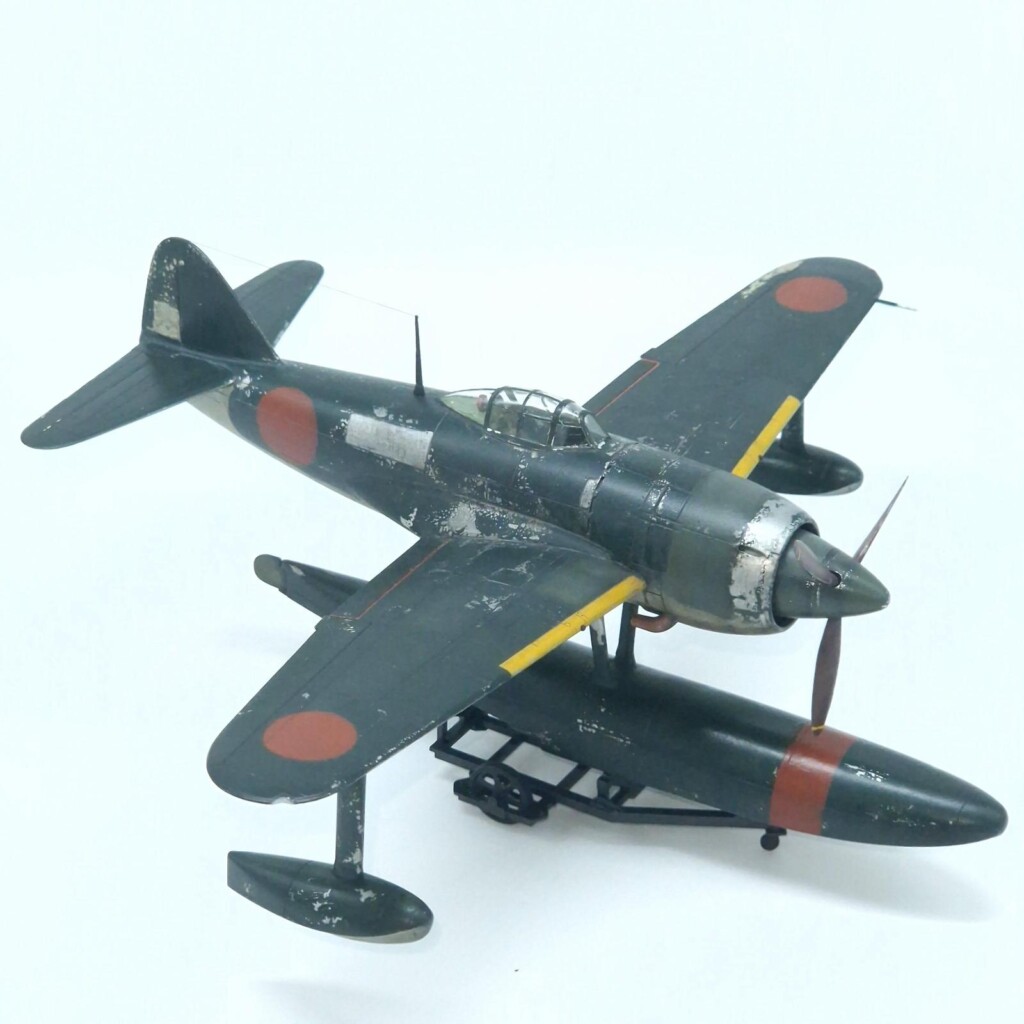

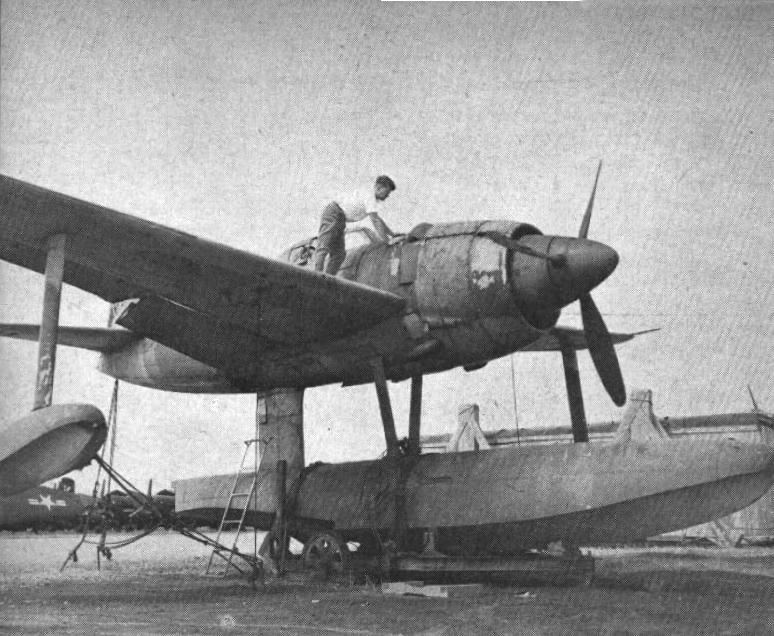
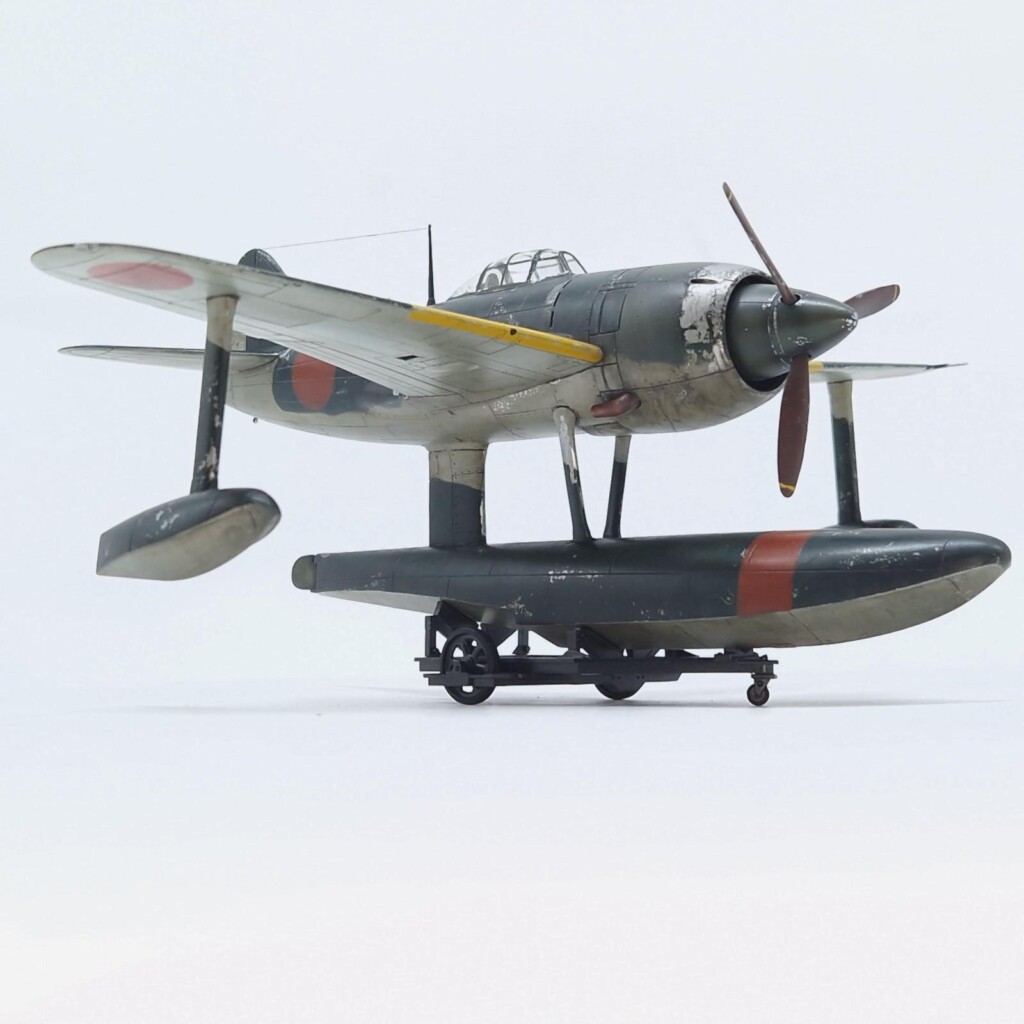
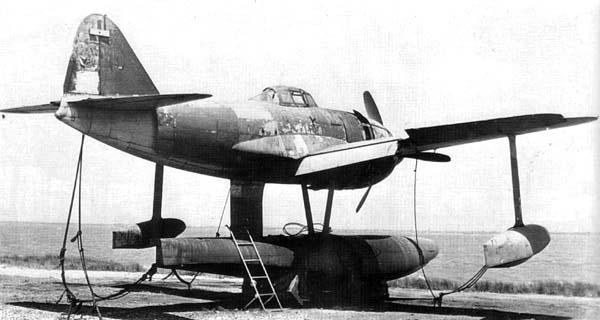
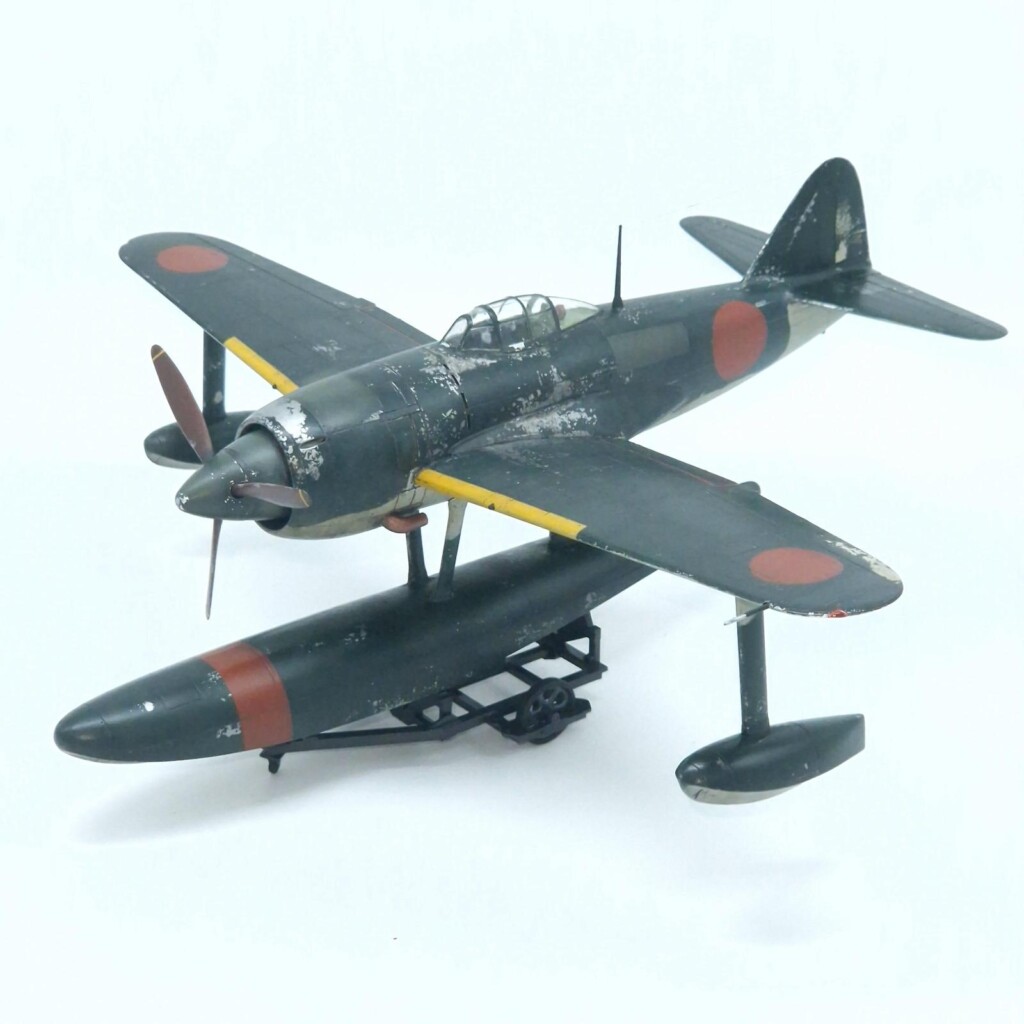
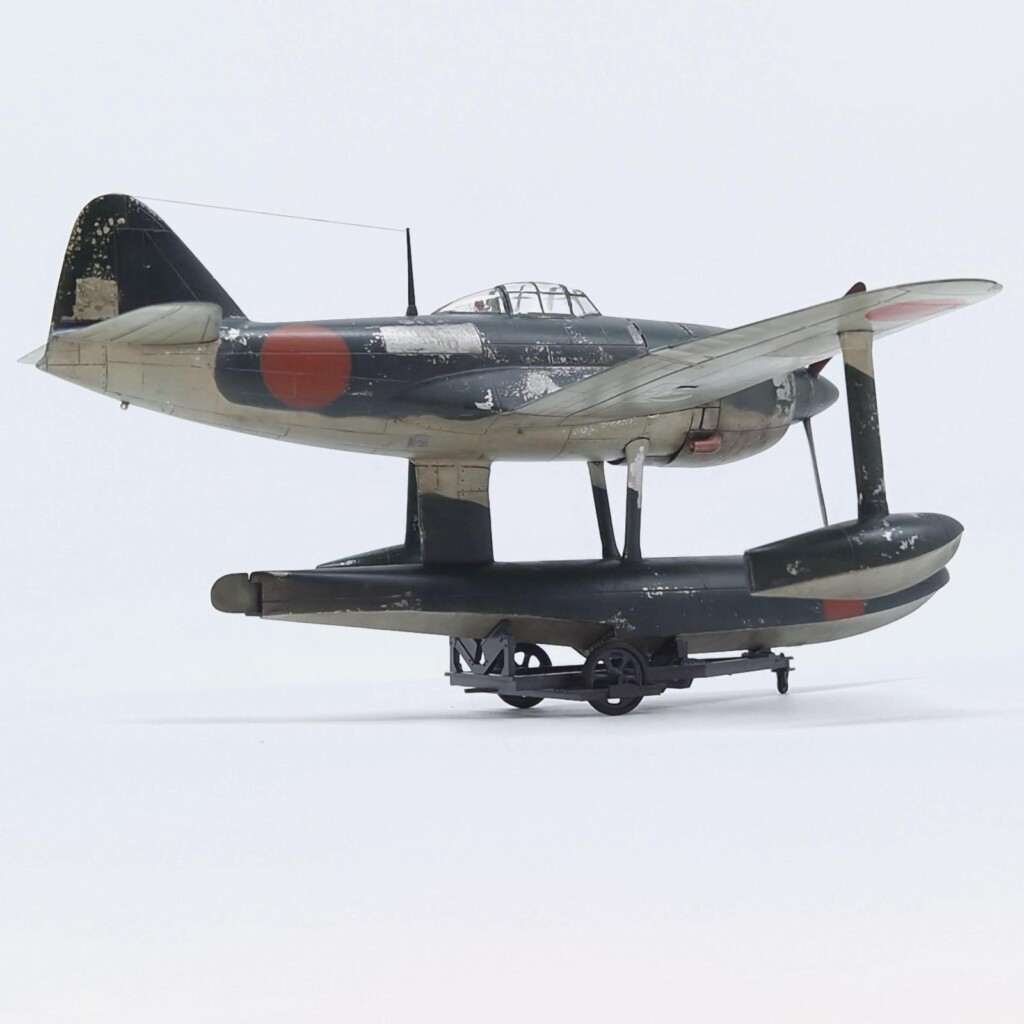
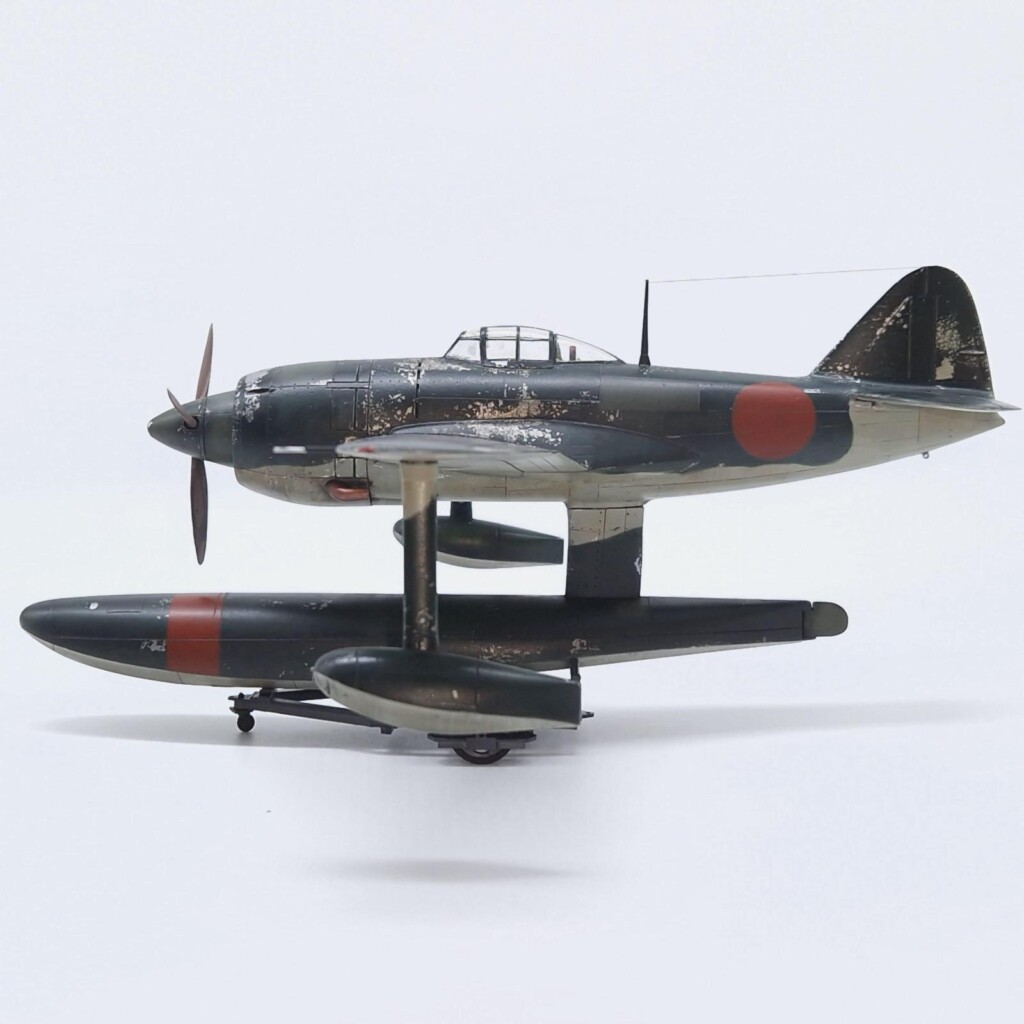
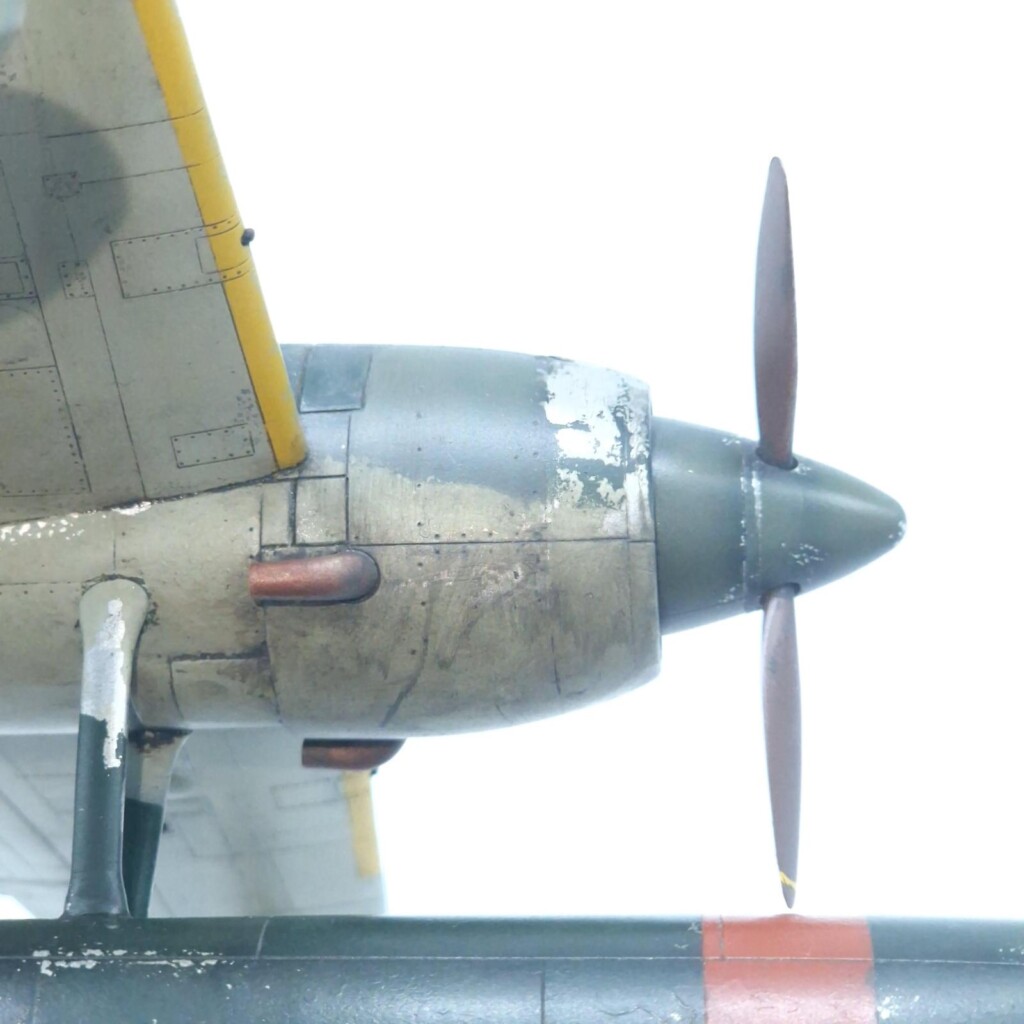
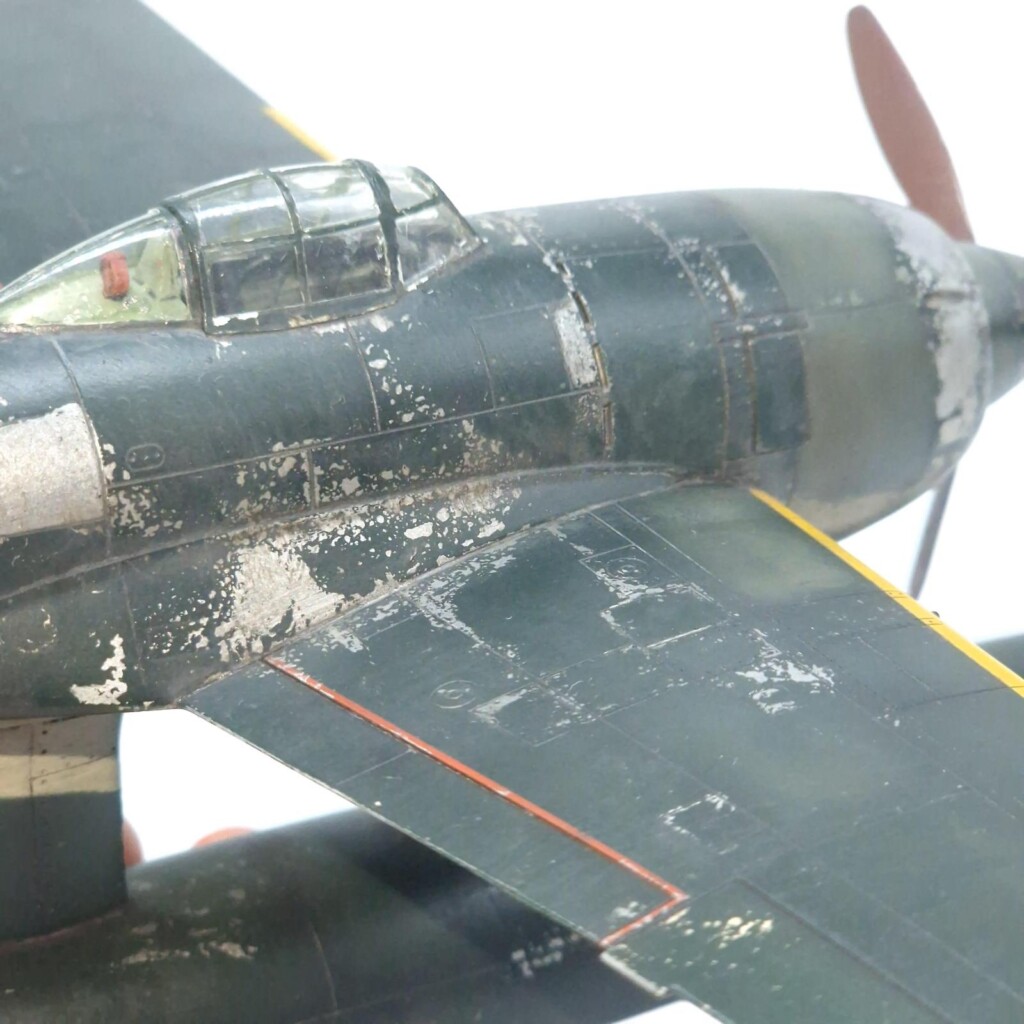
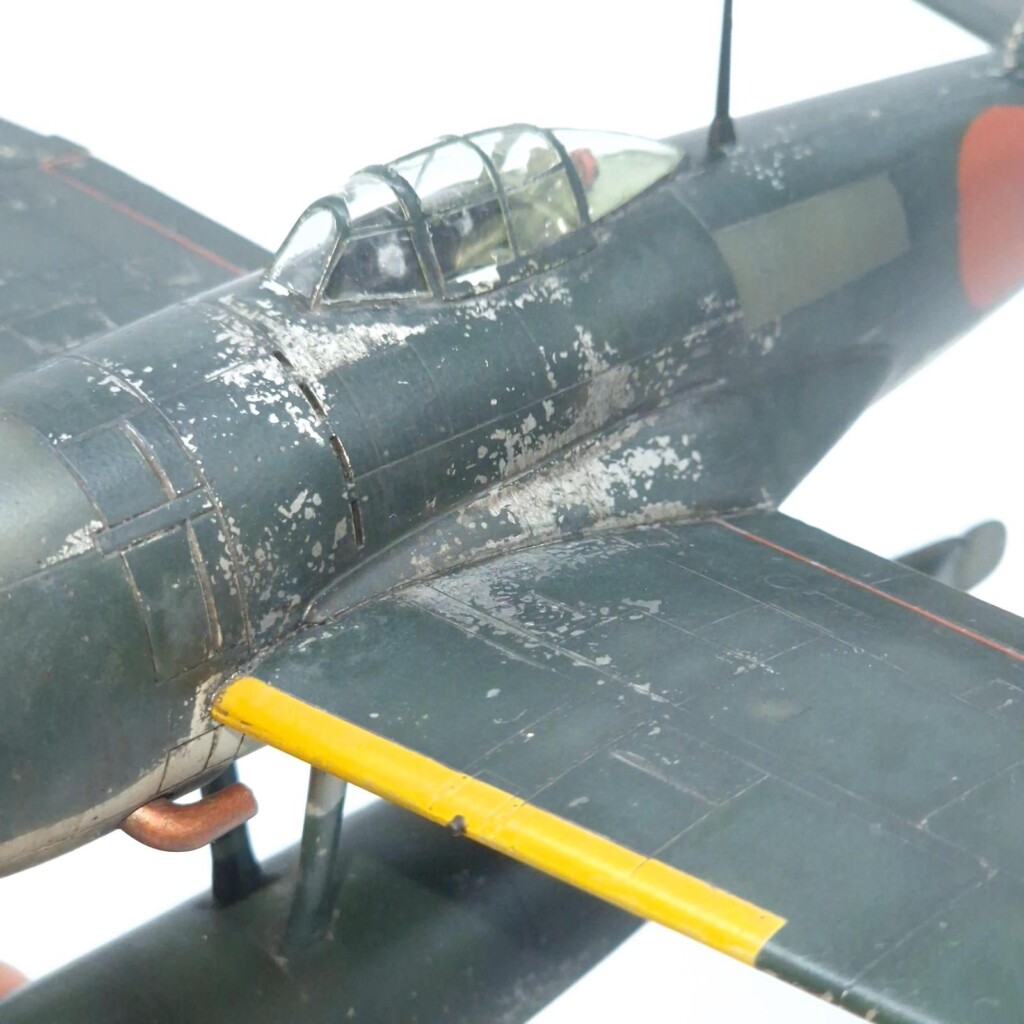
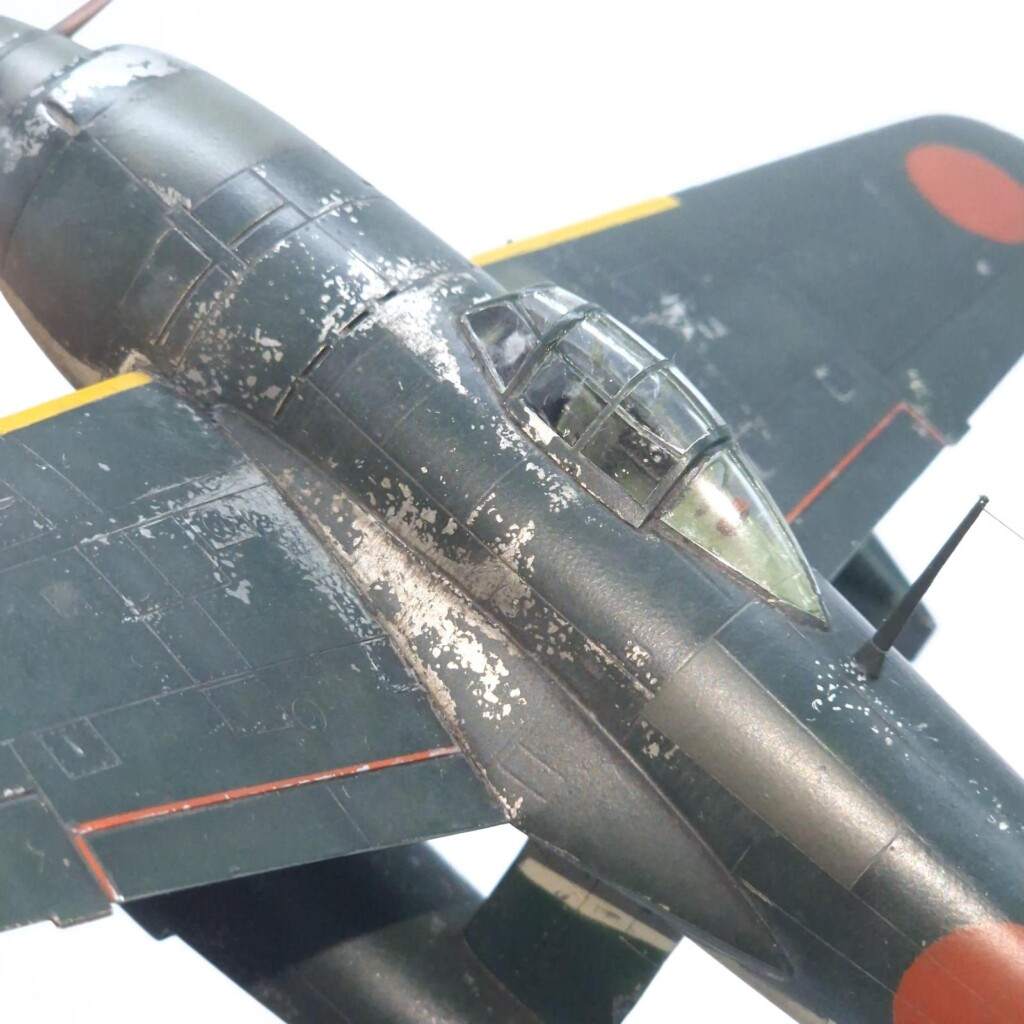
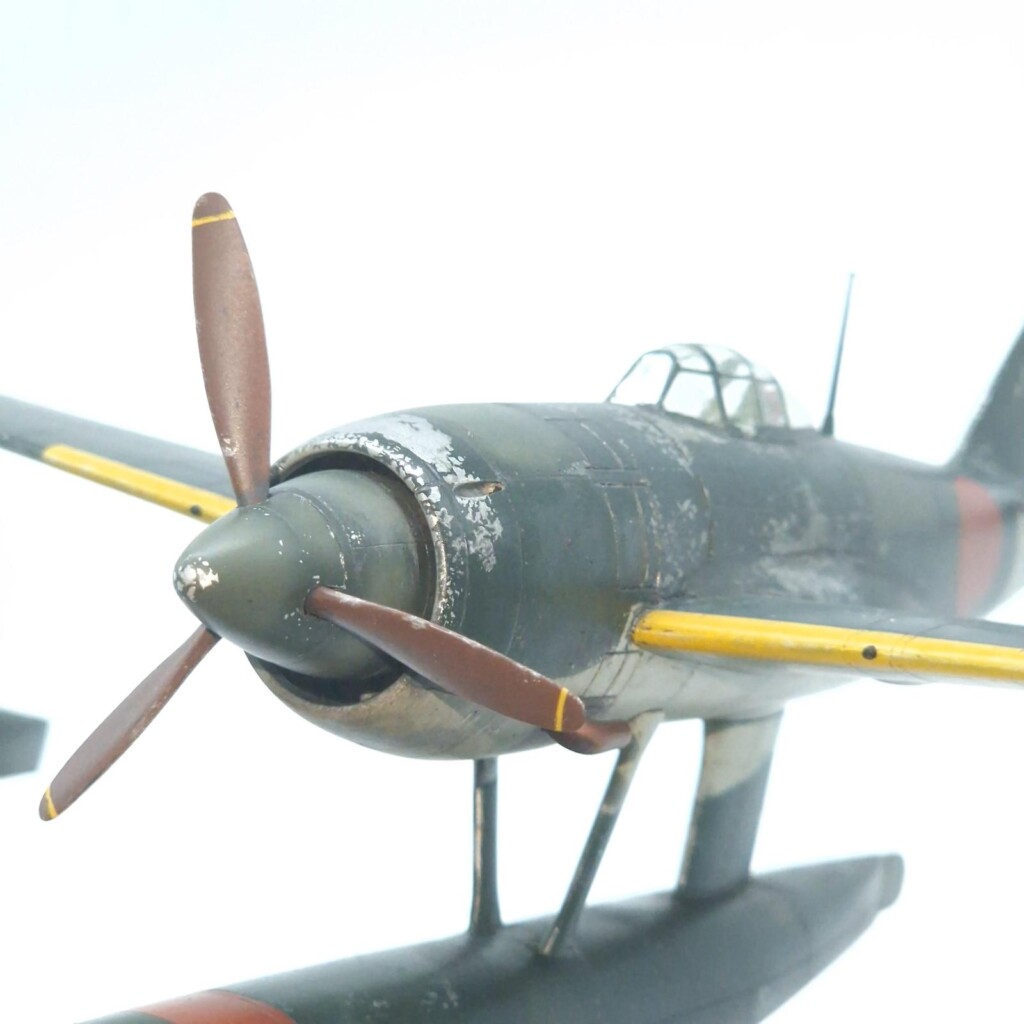

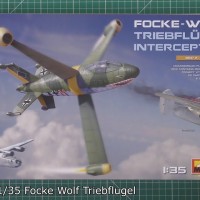


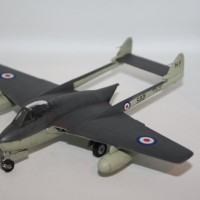
Another beautiful build Harvey! That weathering writes it's own story, and it's very convincing.
Might have been an average kit, @scalerambush, but in your hands it didn't result in an average model. This looks very nice.
Thank you kindly!
Indeed, a fantastic result, Harvey! Weathering is exquisite!
Amazing looking Rex, Harvey @scalerambush
Weathering indeed superb, for example the exhausts look very realistic.
Thanks for the historical background, I was not aware the Japanese worked also with a contra rotating proprellor.
Thank you! It's certainly interesting for sure, the Kawanishi also produced 15 E15Ks which had a contra-rotating prop, as well as a few other interesting quirks like jettisonable floats for an urgent getaway though unsurprisingly both of these features had relablity issues. Kawasaki also built a prototype for the Ki-64 which had a contra-rotating prop driven by two engines, similar to how the French did the VB.10.
This looks great. From where I stand there is nothing wrong with the weathering. Well within the parameters expected from a Japanese ww2 fighter.
Looks great, Harvey, well above average.
Despite the chipping fluid orange peel effect ( only visible in the upclose photos) your weathering idea is very good, all the combine effects produce a splendid model. Much better than a brand new look if you ask me
P.S. had the same issue with chipping agent (I think it’s from AK) so I changed the m.o. from airbrush to brush, and it works great without complications
'Orange peel' is a great way to describe it! Interesting to hear it works fine from a regular brush. Personally I haven't had many issues with the AK chipping stuff in my builds, though funnily enough this and my old N1K2 are the two builds I have had issues with it... On stuff like the Corsairs its worked fine
Very nice, Harvey. The paint/weathering look great...especially the chipping. @scalerambush
Harvey R. (@scalerambush)
This looks incredible. I like how it turned out and I especially enjoyed reading the article.
From what I have been told, there were three examples brought back to the USA at the end of the War onboard aircraft carriers after the war ended. Two were captured by the US Navy, and one by the Army. At least two were sent to NAS Patuxent River. One was transferred from there to NAS Philadelphia on 7 October 1946 for display purposes. The other one went to Boston in 1947.
The one "owned" by the Army was given a "FE" Foreign Equipment number.
I'm fairly certain the one in the picture you posted was likely taken at one of these Navy Yards, and probably not at NAS Jacksonville. But anything is possible, as Jacksonville was also a major Naval Air Station.
Eventually these three aircraft ended up with one in Texas, one on display outside for many years at Willow Grove, and one was stored disassembled as part of the Smithsonian collection awaiting eventual restoration.
I have seen the Willow Grove aircraft in person, once in the mid to late 1970's, and once again much more recently.
I like what you have done here, everything about it including the article.
I will be sure to click on the "like" button too.
Thank you very much for the background, I have to admit I was suspicious of the caption being NAS Jacksonville but in general info for the Rex seems very hard to come by, partially due to the low numbers and unexciting service life but also because it's often only refered to as the intro paragraph when describing the George.
I've just done some more googling and also find the picture captioned as NAS Norfolk 1949, perhaps that's more likely, but captions have certainly been wrong many times in the past so I wouldn't trust that either until finding a good source.
e: Adding another photo to the main article if interested, poor quality as I found it on a random Russian website.
Harvey R. (@scalerambush)
Thanks for adding the picture. It is one that I have never seen before.
Fantastic work. Can I ask what metallics you used for the chipping?
Nothing too special, I mostly use MRP paints nowadays and this wasn't an exception.
I used MRP Super Silver for the majority and some sections were given MRP Titanium, they're just what I've had laying around.
Excellent build - love the weathering! Well done.
Great story and great build, Harvey (@scalerambush). I like your weathering a lot. I sometimes like to try some new techniques to see how they look on different models. Your work with different color panels and your chipping is awesome. I want to try some of your techniques soon. Well done.
Thank you! It's definitely an interesting challenge getting darker colours to show variation, paint variations worked well but buff colour oils went a ways too.
All of the above, looks great!